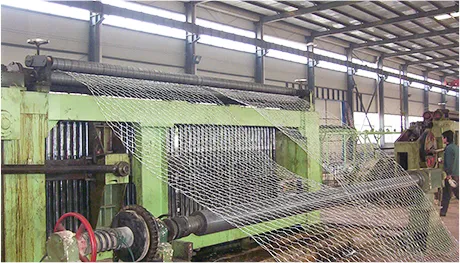
rockfall net
Understanding Rockfall Nets A Vital Solution for Landslide Prevention
Rockfall events are among the most common geohazard phenomena that threaten infrastructure and human safety in mountainous and rocky regions. These events occur when rocks or debris detach from a slope and tumble down, potentially causing significant damage to roads, buildings, and even posing risks to life. To mitigate these risks, engineers and geologists have developed various solutions, one of which is the use of rockfall nets.
Rockfall nets are specialized mesh structures designed to catch and contain falling rocks before they can reach vulnerable areas below. Constructed from high-tensile steel wire, these nets provide a robust solution to managing rockfall hazards. They are often deployed on steep slopes where rockfalls are prevalent, acting as a barrier that absorbs the energy of falling rocks and prevents them from causing damage.
The design and installation of rockfall nets require careful consideration of various factors, including the geology of the area, the size and frequency of potential rockfalls, and the specific location where protection is needed. Engineers conduct thorough site assessments to evaluate the slope's stability and to identify the types of rocks and debris likely to fall. This thorough approach ensures that the nets can effectively handle the anticipated rockfall impact.
One of the primary advantages of rockfall nets is their flexibility
. They can be installed on slopes with irregular shapes and can be adapted to fit various terrains. This versatility makes them suitable for a range of environments, from highways and railways to sensitive ecological zones. Moreover, they have a minimal environmental footprint compared to alternative solutions, such as retaining walls, which can alter the natural landscape.rockfall net

There are different types of rockfall nets, each designed to meet specific requirements. For instance, lightweight nets can be used in situations where small rocks are likely to fall, while heavy-duty nets are applied in areas where larger boulders pose a significant risk. Additionally, rockfall nets can be integrated with other protective measures, such as catchment ditches and drains, further enhancing their effectiveness in rockfall management.
Despite their benefits, the installation of rockfall nets demands careful engineering and maintenance. Over time, factors such as weather conditions, corrosion, and wear can compromise the integrity of the nets. Regular inspections and maintenance regimes are essential to ensure that the nets continue to perform effectively. This includes checking for any signs of damage, corrosion, or entrapment of debris that could reduce their capacity to catch falling rocks.
As climate change leads to more extreme weather patterns, the frequency and intensity of landslide events may increase. Thus, the importance of rockfall nets is likely to continue growing in the coming years. By investing in such protective systems, communities can take proactive measures to safeguard their infrastructure and protect lives.
In conclusion, rockfall nets represent a vital component in the ongoing efforts to manage geohazards associated with rockfall events. They provide a flexible, effective, and environmentally friendly solution for protecting people and property in areas vulnerable to such natural events. With appropriate design, regular maintenance, and integration into broader hazard management strategies, rockfall nets can play a crucial role in minimizing the impact of landslides and ensuring safer, more resilient communities in the face of natural hazards. By prioritizing the deployment of these protective measures, we take significant steps toward safeguarding our surroundings against the unpredictable forces of nature.
-
Wire Mesh for Every Need: A Practical SolutionNewsJul.25,2025
-
Steel Fences: Durable, Secure, and Stylish OptionsNewsJul.25,2025
-
Roll Top Fencing: A Smart Solution for Safety and SecurityNewsJul.25,2025
-
Cattle Farm Fencing Solutions for Maximum SecurityNewsJul.25,2025
-
Affordable Iron Binding Wire SolutionsNewsJul.25,2025
-
Affordable Galvanized Wire SolutionsNewsJul.25,2025
-
Wire Hanger Recycling IdeasNewsJul.25,2025








